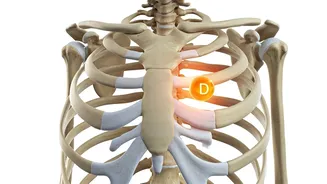Sunshine's Unexpected Shortfall
India's geographic location, with its tropical climate, suggests that Vitamin D deficiency should be rare. Yet, this is far from the reality. The prevalence
of this deficiency is surprisingly high, affecting a large segment of the population. Several factors, beyond just lack of sunlight exposure, contribute to this situation. These include dietary habits, cultural norms, and environmental influences. Analyzing these various elements is essential to grasp why so many Indians experience this vitamin shortfall despite living in a sunny region, and how it is affecting their health.
Dietary and Nutritional Gaps
The Indian diet, while diverse, often lacks sufficient Vitamin D-rich foods. Traditional meals may not always include foods naturally high in this essential vitamin or foods fortified with it. Moreover, the reliance on vegetarian diets, common in many Indian communities, may further limit the intake of Vitamin D, as it is primarily found in animal products. The preparation methods also play a part. Overcooking or certain cooking practices might destroy some Vitamin D content. Therefore, it's crucial to examine dietary habits and the nutritional content of commonly consumed foods to understand the dietary aspect of the Vitamin D crisis in India. This examination can reveal critical dietary modifications that could benefit overall health.
Lifestyle's Shadowy Impact
Modern lifestyles, especially in urban areas, can unintentionally hinder Vitamin D production. Increased time spent indoors, either at work or at home, reduces sunlight exposure, the primary source of Vitamin D synthesis. The dress code and cultural preferences also play a role. The tendency to cover the body with clothing may further limit the skin's exposure to ultraviolet B (UVB) rays, necessary for Vitamin D production. Furthermore, the increasing use of sunscreen, although beneficial for skin protection, can also block UVB rays, thereby impacting the body's ability to produce Vitamin D. Examining these lifestyle factors is vital in understanding the Vitamin D deficiency rates across India, especially in the context of urbanization and changing cultural trends.
Skin Pigmentation Factors
The natural skin pigmentation of Indians significantly influences Vitamin D synthesis. Melanin, the pigment responsible for skin color, acts as a natural sunscreen, absorbing UVB rays. Individuals with darker skin tones require longer sun exposure to produce the same amount of Vitamin D compared to those with lighter skin. This physiological aspect adds to the complexities of Vitamin D deficiency in India. Understanding the interplay between skin pigmentation and sun exposure is crucial when interpreting the prevalence and severity of this deficiency among different communities across the country. This also guides personalized strategies to improve Vitamin D levels based on skin types.
Health Implications Unveiled
Vitamin D is essential for various bodily functions, and its deficiency can lead to several health complications. It plays a crucial role in bone health, assisting the absorption of calcium and phosphorus, crucial for bone development and maintenance. Insufficient Vitamin D can lead to rickets in children and osteomalacia or osteoporosis in adults, characterized by weakened bones and increased risk of fractures. Moreover, Vitamin D has been associated with immune function, and low levels can increase susceptibility to infections. Chronic deficiency has been linked to other health conditions, including cardiovascular disease, diabetes, and certain types of cancer. Awareness of these wide-ranging health impacts makes it essential to address the root causes and implement effective intervention strategies.
Preventive Strategies Explored
Addressing Vitamin D deficiency requires a multi-pronged approach that includes dietary modifications, lifestyle changes, and potentially supplementation. Encouraging the consumption of Vitamin D-rich foods, like fatty fish, eggs, and fortified products, is crucial. Promoting outdoor activities and ensuring adequate sun exposure, ideally during times of low UV intensity, can boost natural Vitamin D production. Supplementation may be necessary, especially for those at high risk or with confirmed deficiency. Regular health check-ups and Vitamin D level assessments are essential for monitoring progress and making appropriate adjustments to the strategies. Public health campaigns aimed at educating the population on these aspects are also necessary to ensure wider adoption of these preventive measures.
The Road to Wellness
Combating Vitamin D deficiency in India requires a concerted effort from individuals, healthcare professionals, and government bodies. By understanding the causes, recognizing the health impacts, and implementing effective preventive measures, the nation can move toward a healthier future. This includes increasing awareness about Vitamin D's importance, improving dietary habits, encouraging outdoor activities, and promoting regular health check-ups. Addressing this issue also contributes to the prevention of several chronic diseases and the improvement of overall quality of life. The long-term wellness of the population relies on this combined strategy, ensuring that everyone benefits from the abundant sunlight India offers.






